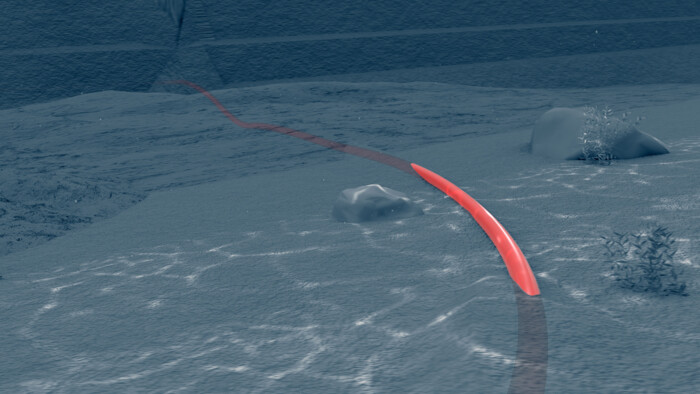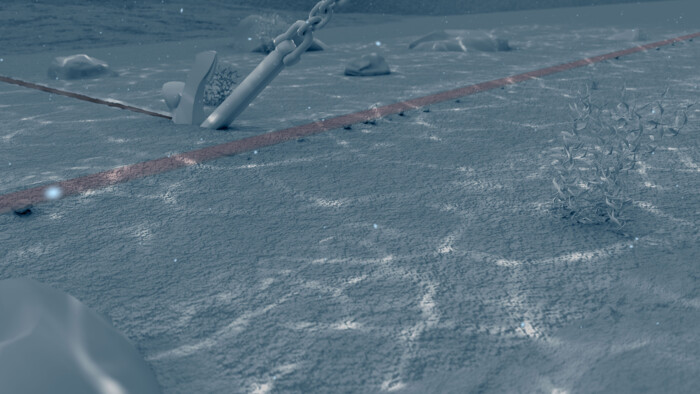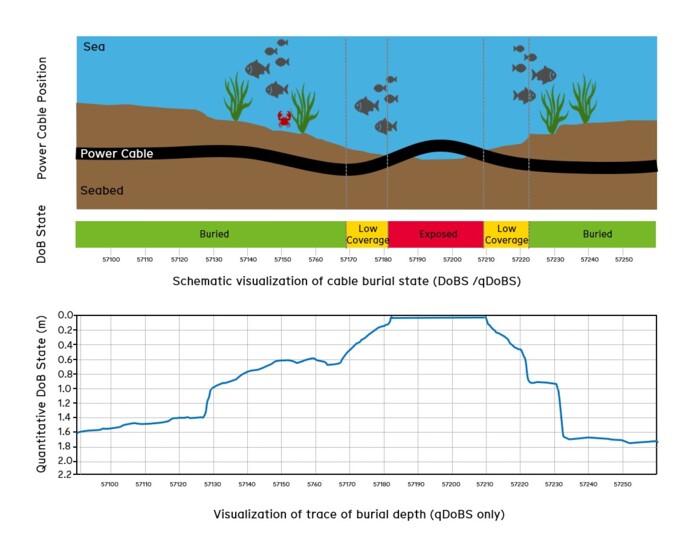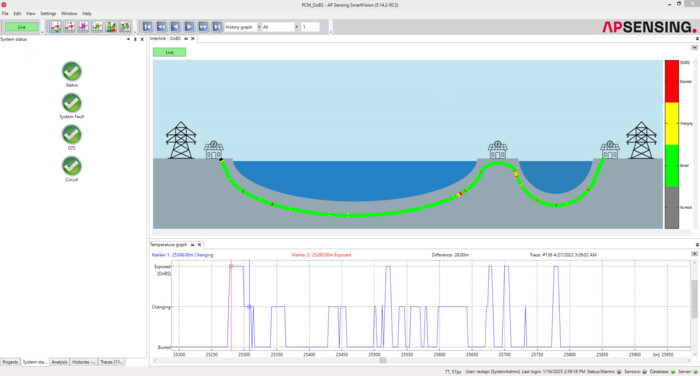Depth of Burial State Monitoring
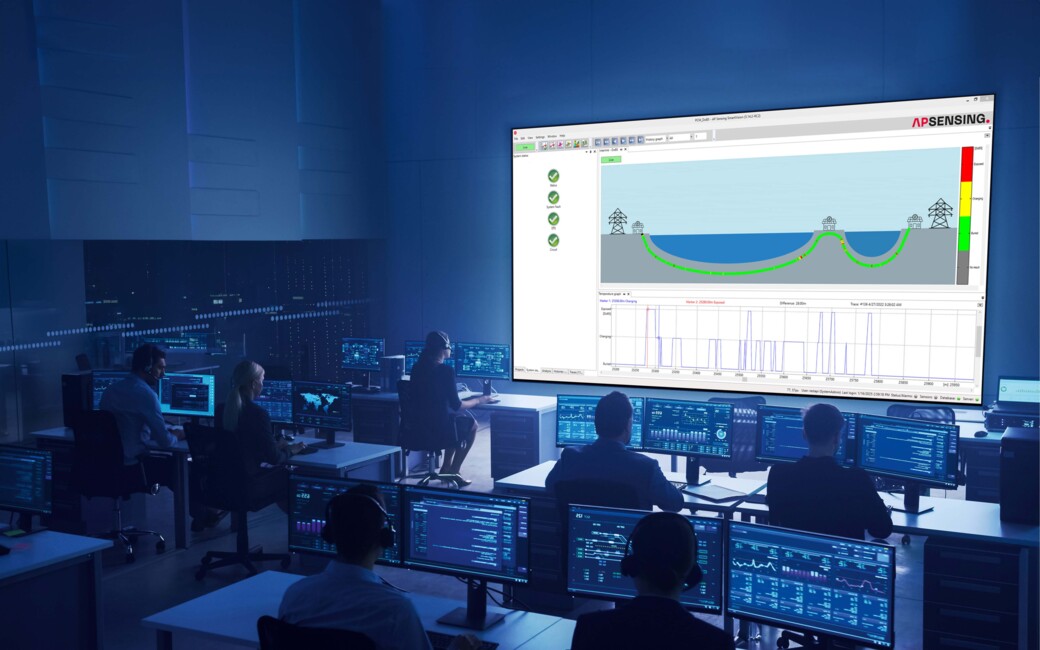
Submarine power cables face dynamic seabed environments where sediment movement, seismic activity, and other factors can alter burial depth, increasing the risk of damage. To comply with legal standards and ensure optimal cable performance, regular monitoring of burial depth is essential.
Depth of Burial State Monitoring (DoBS)
AP Sensing's DoBS solution continuously monitors the burial condition of subsea cables by analyzing their thermal behavior in response to load changes. It determines whether a cable is buried, exposed, or has low coverage, without the need for complex ambient condition data or models. This ensures reliable and real-time insights into burial depth, facilitating predictive maintenance and operational efficiency.
Quantitative Depth of Burial State Monitoring (qDoBS)
Building on DoBS, qDoBS offers centimeter-level accuracy in burial depth measurements. Using an advanced algorithm, qDoBS delivers fast and highly precise results, enabling multiple updates per day and providing a detailed
trace of burial depth across the entire cable length, regardless of environmental conditions.
Key Benefits & Advantages
DoBS Benefits
Cost-Effective Maintenance
By continuously monitoring burial depth, DoBS enables predictive maintenance based on actual conditions rather than periodic checks, significantly reducing costs.
Risk Mitigation
Real-time detection of exposure or heavy burial ensures prompt response, reducing the risk of cable damage and extending cable life.
Simplicity & Reliability
DoBS delivers accurate results without the need for extensive environmental data, making it a faster and more reliable solution compared to traditional models.
qDoBS Benefits
Precision Monitoring
With centimeter-level accuracy, qDoBS provides the most detailed and reliable burial depth measurements available, ensuring that any deviations in burial are detected early.
Fast, Multiple Daily Updates
The system processes multiple data sets per day, allowing operators to stay updated in real time and act quickly if conditions change.
Operational Optimization
Continuous monitoring with precise data enables better planning, resource allocation, and reduced insurance costs, ultimately improving overall cable management.
Product Features & Highlights
DoBS Key Features
- Continuous real-time monitoring of burial depth across the entire cable
- Configurable alarms and pre-alarms for immediate detection of exposure or low coverage
- Requires only a DTS unit at an onshore or offshore location for accurate results
- No need for detailed environmental input data (e.g., water temperature, soil type)
- Robust algorithm that ensures reliable results, even under challenging environmental conditions
qDoBS Key Features
- Centimeter-level accuracy for precise burial depth measurements
- Fast calculation times with the ability to perform multiple rating runs per day
- Accurate depth tracing along the full length of the power cable
- Integrated with industry-standard communication protocols such as Modbus TCP, IEC 60870-5-104, and IEC 61850 for seamless data transfer
- Supports real-time alarms and system status notifications for proactive management

Versatile Use Cases for Subsea Power Cable Monitoring
DoBS Applications
- Offshore Wind Farms: Continuous burial depth monitoring ensures that power cables remain safely buried, optimizing energy transfer and reducing maintenance costs.
- HVDC & HVAC Subsea Cables: Protect high-voltage cables from exposure and overheating, ensuring stable energy transmission.
- Oil & Gas Industry: Monitor burial depth in offshore installations to prevent damage to critical power cables in dynamic seabed environments.
qDoBS Applications
- Critical Subsea Infrastructure: Ideal for high-precision monitoring in projects requiring detailed burial depth data, such as large-scale cable systems.
- Seismic or Sediment-Prone Zones: Provides reliable, real-time data in challenging seabed conditions where sediment mobility or seismic activity could impact cable safety.
- Submarine Cables in Extreme Environments: QDoBS’s centimeter-level accuracy ensures precise monitoring in even the most difficult underwater environments.
Both DoBS and qDoBS offer cutting-edge solutions for continuous, real-time monitoring of subsea power cables. These advanced technologies deliver precise, actionable data that optimize cable protection, maintenance, and operational efficiency, ensuring your infrastructure remains safe and compliant in the most challenging underwater environments.
